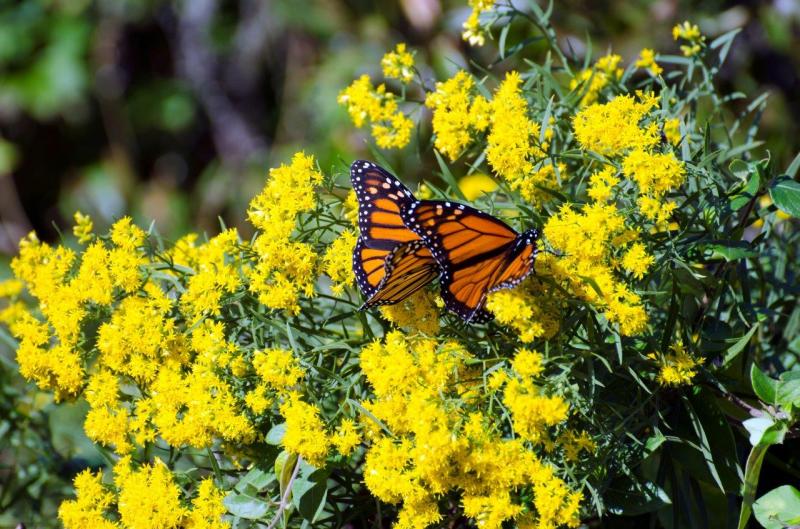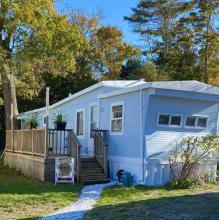Lloyd Center Surveys Dune Affiliate Insects in Westport by Jamie Bogart, Lloyd Center for the Environment Research Associate
Following years of leading shorebird work in Westport through work at Horseneck Beach State Reservation, the Lloyd Center took to the dunes in 2019 in search of “dune affiliate” insects at Horseneck, Bakers Beach, and Westport Town Beach (Cherry and Webb), which support assemblages of moths, butterflies, beetles and bees. This all-encompassing survey of the dunes of this barrier beach ecosystem is important due to relatively little knowledge about the dune habitats as they relate to insects, and like the Piping Plover which nests nearby, potential impacts from climate change.
Most species identification will occur after the field season, but some updates can be provided since last mention of this project. Butterfly species which could have climate change implications and have been seen at Horseneck and Cherry and Webb beaches include the Red-banded hairstreak which is undergoing a range shift north, and the Cloudless Sulfur, the largest of our sulfurs that is known as a vagrant in the region but is particularly numerous this year. Currently the goldenrod is filled with migratory Monarchs which converge on Gooseberry, but has also become abundant at Horseneck.
The abundance and diversity of beetles has been relatively low. At Horseneck, between June 18 and September 16, a total of 25 beetles have appeared in the trap, compared to only 12 at Bakers Beach. The Horseneck location is lower lying and directly under foliage within the Pitch Pine forest, compared to at the edge of a vegetated swale away from trees at Bakers, where beetles may be less abundant. Various bee species have been observed including the common Bumble Bee.
The survey techniques used for each group are as interesting as the bugs. The simplest are the butterflies, where a net is used to capture individuals that can’t be identified with the naked eye or through binoculars. The pitfall traps “guide” any beetles to walk into cups buried in the sand, which are collected and identified along with other insect fauna that may appear. These traps are reset after heavy rains because the cups become waterlogged. Bees are sampled both with net and by use of “bee cups”. The cups are simply painted yogurt containers that resemble flowers, are filled with soapy water, and spaced at approximately five-meter intervals with 20-25 cups used per survey. The moth sampling of course involves the battery and a light trap, whereby moths fly to the light source and into the trap where they will be collected the following morning.
It should be noted that insects are collected only for identification purposes and voucher specimens, as observation in the wild for these species is often difficult or impossible. For the moth sampling, perhaps it’s fitting then that if one is to take specimens from the environment, they’ll work! Battery and trap must be carried from vehicle to trap site, which at Westport Point meant a long slog through hilly dunes to isolated bog areas. Initially (and before leaf-out confirmed what plant one was touching!) this entailed a slog through dense poison ivy! Fortunately, an alternative and quite beautiful route along the salt marsh was discovered where a moon tide would be the only navigational challenge. On this walk to “CW2” (and to the bee cup location) there were large flocks of migrating egrets and herons, gulls chasing fish along the marsh, and deer out for an evening feed -not to mention the great sunsets viewable after the trap was set.
This work will provide a basis for future study, as habitats and species composition change in these unique habitats. We look forward to similar research in the future!















